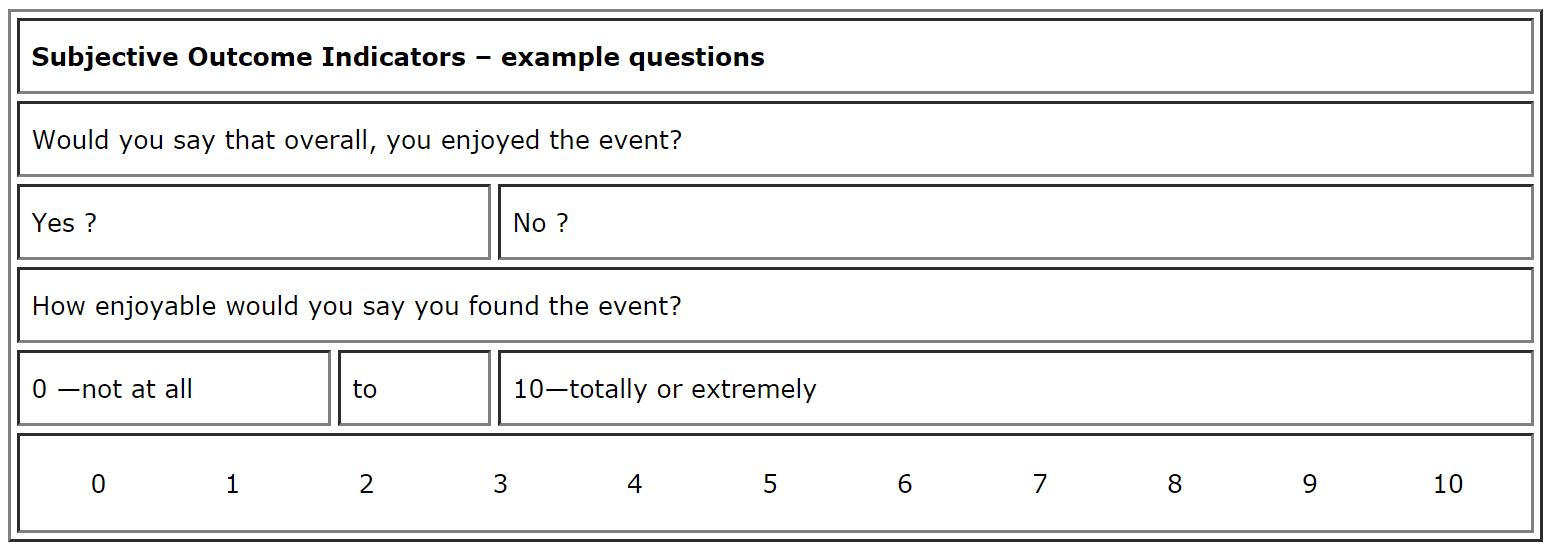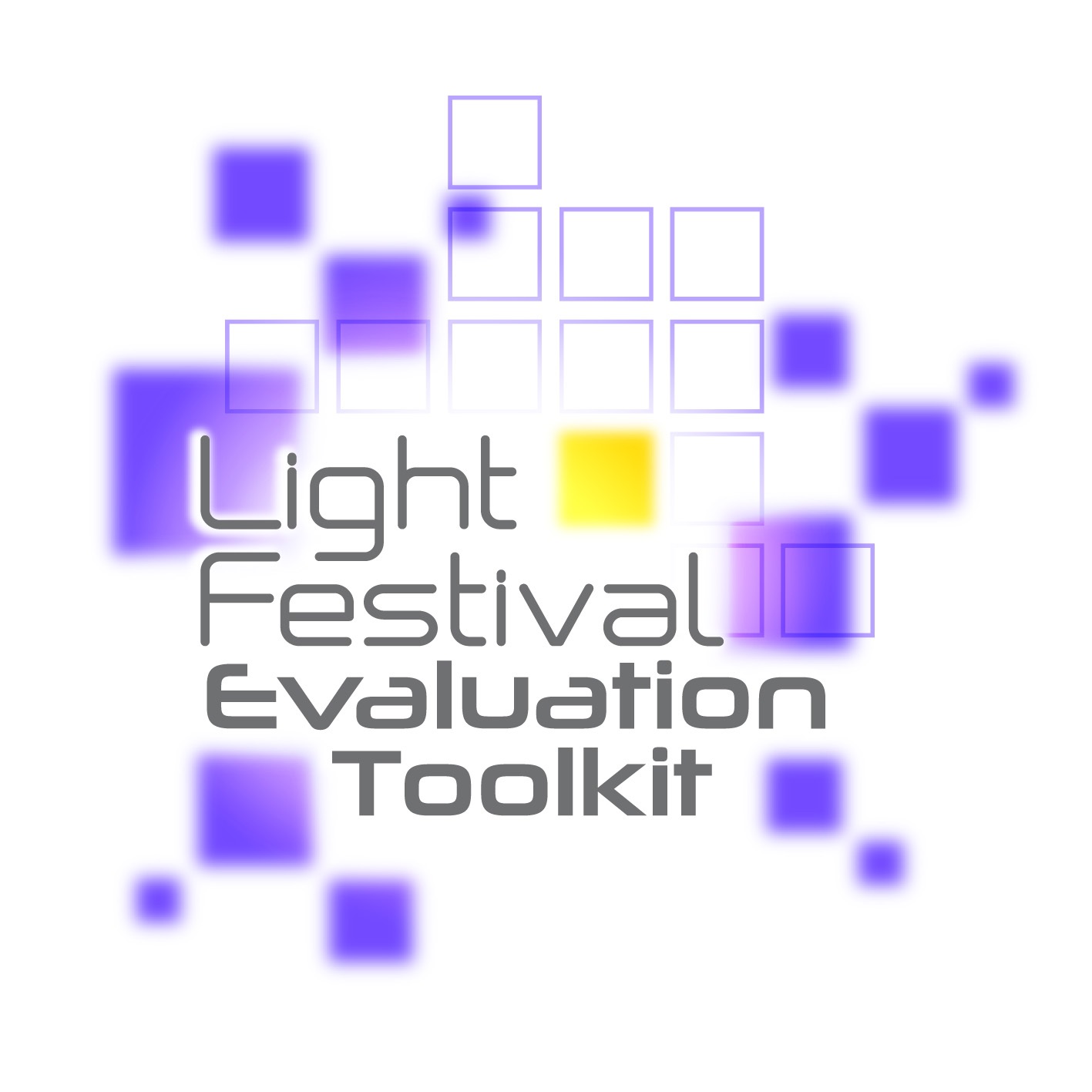Developing indicators
Indicators can help organisers to find out what happened or changed as a result of the event and other factors, and can help organisers to ask further questions about how these changes happened.
For any outcome, there is a range of possible signs, symptoms or hints by which these outcomes can be observed, measured or detected with varying degrees of certainty.
Indicators can be either quantitative – having to do with a quantity or number – or qualitative – having to do with the qualities or characteristics of what is being discussed.

Some indicators help to identify objective outcomes (e.g. whether attendees stayed in the city overnight, or how much the visitors spent on food and drink during their stay).
Other indicators can help to show the presence of, or changes in, subjective things: ideas, opinions, or attitudes (e.g. whether or not trainees feel they have more self confidence).
In both cases, it is possible to ask questions that elicit simple ‘yes/no’ or ranked responses and can be categorised and assigned numerical values. Where qualitative indicators are used to illustrate or demonstrate that something has happened, or to capture a process of change, questions can also be asked in a more open-ended way, and can be more open to a person’s individual interpretation.

What makes a good indicator?
Many issues are interesting to the organisers and sponsors. It’s essential to develop processes that help to understand why things happen and provide more free-form feedback.
As a complement to these, it’s important to choose indicators of performance, quality, or outcomes that are within the organiser’s scope to measure and use.
The New Economic Foundation (NEF) has developed core criteria for choosing indicators (AIMS) that can be summarised as follows:
- Action focused. Does knowing about this issue help your organisation or its key stakeholders to do things better or more effectively? Is it within your organisation’s power to influence it?
- Important. Is it relevant to your organisation? Is it a priority for a core stakeholder or group of stakeholders?
- Measurable. Can you get information that tells you something about the effects you’ve had?
- Simple. Is it clear and direct enough to be understood by all stakeholders? Is it easy enough to get information without expert assistance if none is available?



